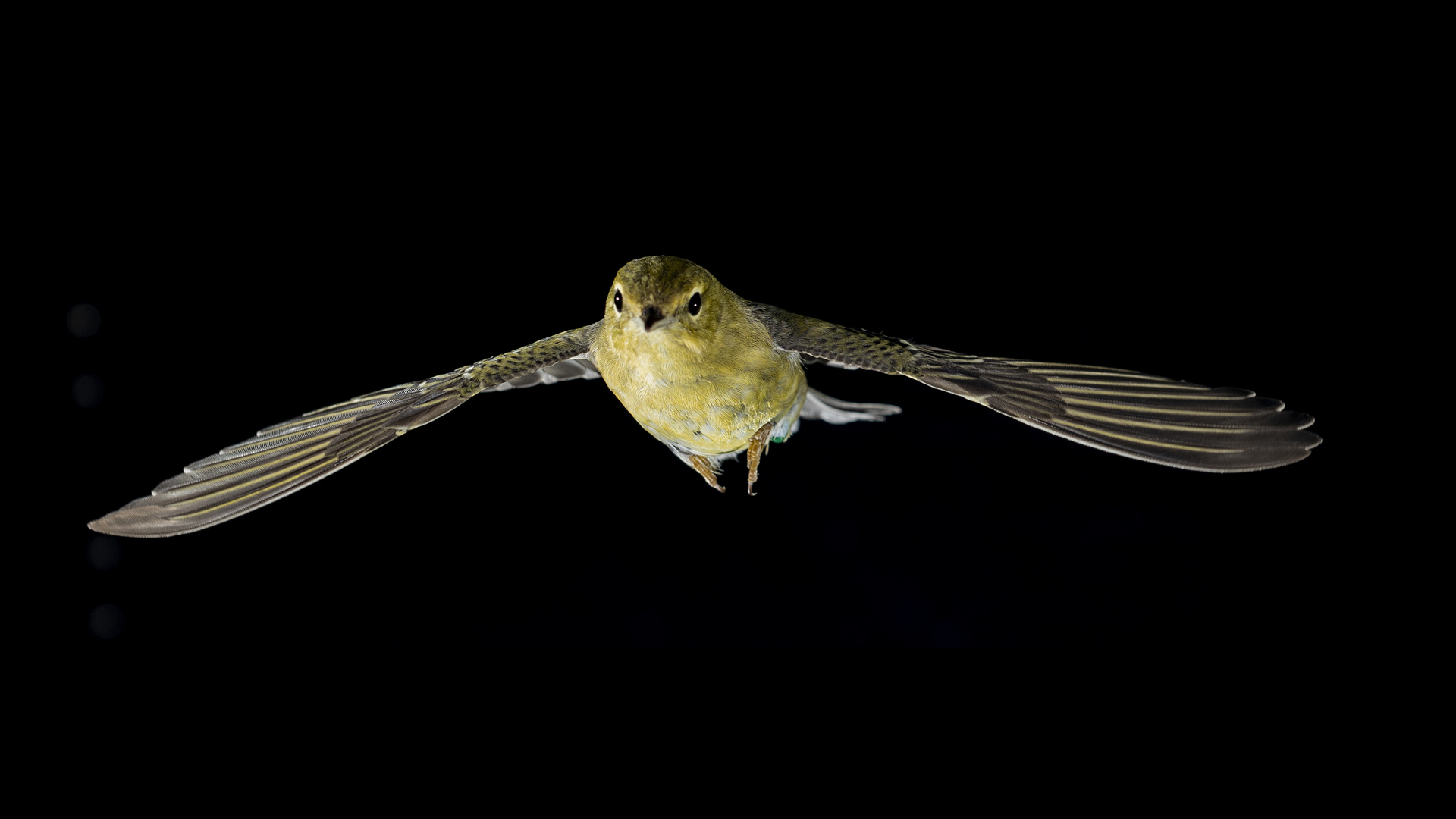A team of US researchers has made a surprising discovery concerning the capabilities of long-distance migrant songbirds.
Migrating passerines, which make non-stop flights of more than 1,500 km between their breeding and wintering ranges, fuel themselves by burning lots of fat and a surprising amount of the protein making up lean body mass, including muscle, early in the flight.
This is in direct contrast to conventional wisdom, which had assumed that migrating birds only ramped up protein consumption at the very end of their journeys because they would need to use every ounce of muscle for wing-flapping, not fuel. The results of the work appeared recently in the Proceedings of the National Academy of Sciences.
"Birds are amazing animals," said Cory Elowe, the paper's lead author and a postdoctoral researcher in biology at University of Massachusetts Amherst, where he received his PhD. "They are extreme endurance athletes; a bird that weighs half an ounce can fly non-stop for 100 hours at a time from Canada to South America. How is this possible? How do they fuel their flight?"

Blackpoll Warblers would fly up to 28 hours before voluntarily stopping, where inspection would reveal that their protein reserves were depleted (UMass Amherst).
For a very long time, biologists assumed that birds fuelled such feats of endurance by burning fat reserves. And indeed, fat is an important part of migratory birds' secret mix. "The birds in our tests burned fat at a consistent rate throughout their flights," explained Elowe. "But we also found that they burn protein at an extremely high rate very early in their flights, and that the rate at which they burn protein tapers off as the duration of the flight increases."
"This is a new insight," added Alexander Gerson, associate professor of biology at UMass Amherst and the paper's senior author. "No one has been able to measure protein burn to this extent in birs before."
"We knew that birds burned protein, but not at this rate, and not so early in their flights," continued Gerson. "What's more, these small songbirds can burn 20% of their muscle mass and then build it all back in a matter of days."
To make this breakthrough, Elowe had help from the bird banding operators at Long Point Bird Observatory in Ontario, Canada, along the northern shore of Lake Erie. Every fall, millions of birds gather near the observatory on their journey to their wintering grounds.
After capturing 20 Blackpoll Warblers and 44 Myrtle Warbler using mistnets, Elowe and his colleagues then transported the birds to the Advanced Facility for Avian Research at Western University, which has a specialised wind tunnel built specifically for observing birds in flight.
Elowe measured the birds' fat and lean body mass pre-flight, then, when the sun set, let the birds free in the wind tunnel. Because the birds naturally migrate at night, Elowe and his colleagues would then stay awake – at one point, in the case of a Blackpoll Warbler, for 28 hours – watching for when a bird would decide to rest. At that point, the researchers would collect the bird and again measure its fat and lean body mass content, comparing them with the pre-flight measurements.
"One of the biggest surprises was that every bird still had plenty of fat left when it chose to end its flight," says Elowe. "But their muscles were emaciated. Protein, not fat, seems to be a limiting factor in determining how far birds can fly."
The researchers still don't know why the birds are burning such vast stores of protein so early in their journeys, but the possible answers open up a wide range of future research avenues.
Gerson said: "How exactly is it possible to burn up your muscles and internal organs, and then rebuild them as quickly as these birds do? What insights into the evolution of metabolism might these birds yield?"
Reference
Elowe, C R, Groom, D J E, Slezacek, J, & Gerson, A R. 2023. Long-duration wind tunnel flights reveal exponential declines in protein catabolism over time in short- and long-distance migratory warblers. PNAS. DOI: https://doi.org/10.1073/pnas.2216016120

